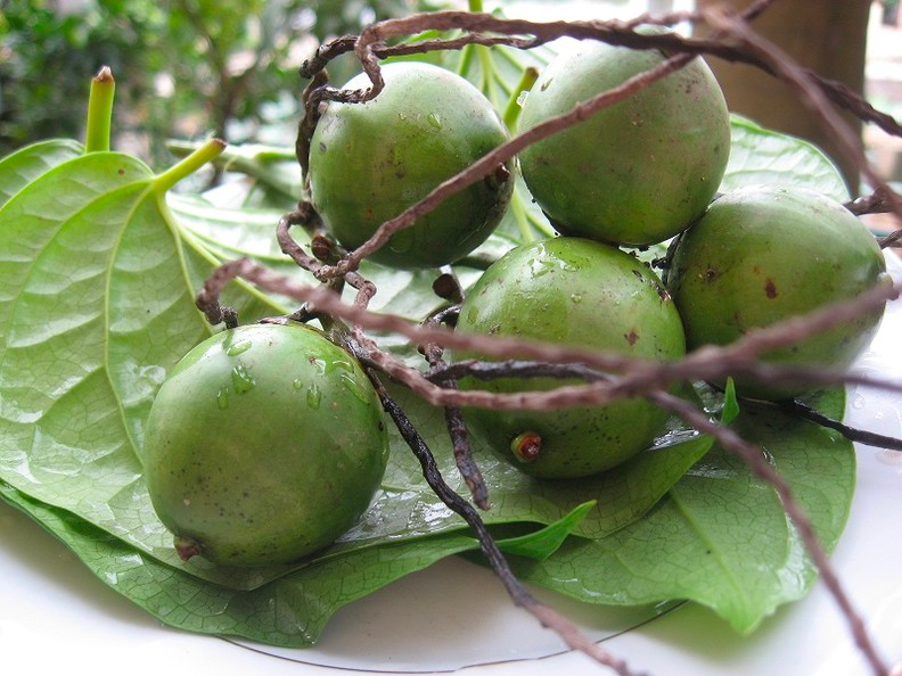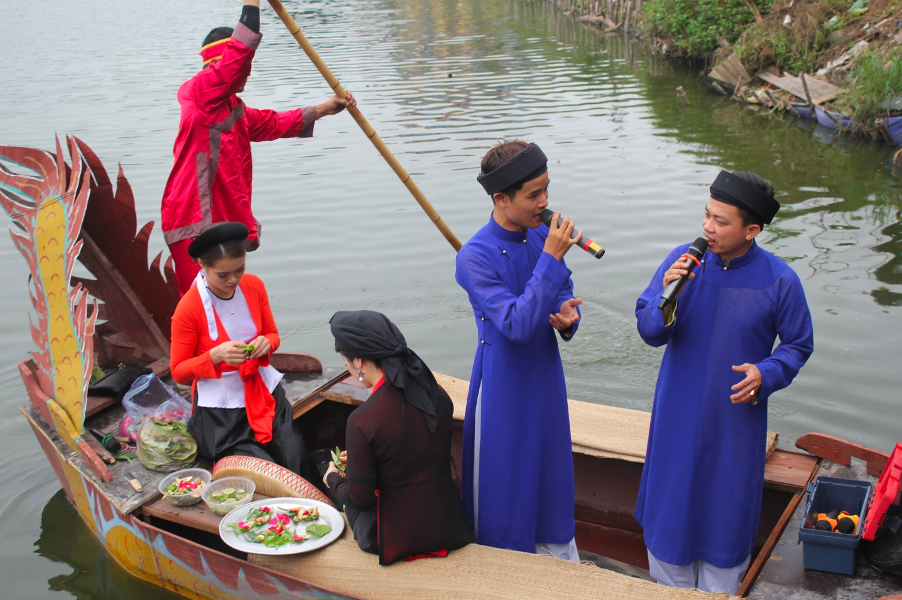
In the spiritual life of the Vietnamese people, chewing betel is not only a habit and a custom but also an element of the traditional cultural values.
In the spiritual life of the Vietnamese people, chewing betel is not only a habit and a custom but also an element of the traditional cultural values. Betel and areca are indispensable gifts in the engagement and wedding ceremonies as well as during conversations.
An age-old custom
Legend has it that the custom of chewing betel in Viet Nam has existed since the reign of the Hung Kings. It is associated with the “Legend of Betel and Areca” about the faithfulness of a wife for her husband and the love between two siblings.

Betel and areca are used to start talking and help people become closer and more open with each other.
They serve as offerings in the important traditional ceremonies, such as the offering rituals, engagements and weddings, funerals and burials. They are a symbol of love, brotherhood, family and happiness.
Chewing betel is a popular practice of people from all walks of life, from normal people to the court and it has become a beautiful characteristic of the traditional culture.
It is the custom of not only the majority Kinh group, but also other ethnic groups, such as the Tay, Nung, Dao, Thai, Muong and San Diu in the northern areas, the Khmer, Bru, Edu and Cham living along the Truong Son Range and in the Central Highlands, and the Khmer in southern areas.
Apart from similarities, due to their different habitations and cultural spaces, the ethnic groups have their specific ways of chewing betel. The Muong, Thai and Ede people use the betel to entertain their guests while the Tay and Nung people use the betel in the ceremony of “tying the thread around the wrists of the bride and bridegroom.”

A betel quid consists of four materials: a wedge of an areca nut (which has a sweet taste), a betel leaf (spicy taste), a piece of bark of a special tree (bitter taste) and a little lime paste (hot taste).
All of them are chewed together, providing a delicious taste with red juice and freshness. The high areca tree symbolizes the heaven (Yang).
The lime symbolizes the earth (Yin). The custom of chewing betel is popular throughout Southeast Asia and the making of the betel leaves and areca wedges into beautiful shapes as well as the betel-inviting practice have become a form of artistic activities full of national identities.
Eternal fragrance and beauty

The custom of chewing betel in Viet Nam is mainly reflected in the betel kits since the Ly (1010-1225) and the Tran (1225-1400) Dynasties.
They include a knife for splitting the areca nuts and shaping the betel leaves, a pot of lime, a tube of lime paste, a little stick used to spread lime on the betel leaf and all of them are diverse in variety.
There are also trays, containers, baskets, boxes, bags and handkerchiefs to contain the betel, areca and small items.
For the elder people with weak teeth, there is a little spatula and a mortar to pound the betel and areca. In the betel kit, the lime pot is an important and indispensable item. In the past, it was respected as a god, so it is called “the Lime God.”
Betel and Areca in Vietnam life

The betel and areca not only serve as offerings in the traditional ceremonies, but also have become a typical image of Vietnamese culture.
They usually appear in the folklore, folk verses, folk songs and festivals. Cao Nhan Village in Cao Nhan Communes, Thuy Nguyen District in the northern city of Hai Phong is known as an areca village.
During harvest time, bunches of areca nuts are piled up and the village is busy with many trucks carrying areca to many parts of the country.
In Phu Le Village, Lam Kiem Commune, Thach That District, Ha Noi, plates of betel and areca and lime pots can be seen everywhere, from the houses to the communal house and the fields.
During the Lim Festival in Bac Ninh held when Spring comes, the local girls wearing a kerchief (tied in a triangle on the forehead), a four-flap gown and a pink brassiere open their betel handkerchiefs to invite the men with betel and areca.
In the South, 18 betel garden villages were established in the beginning of the 17th century, associated with the time of reclaiming land to build the villages. They specialized in growing betel to provide for six southern provinces.
The betel and areca market on Le Quang Sung in District 6, Ho Chi Minh City which provides the specialties from Ba Diem, a garden in the noisy and beautiful urban area, is a unique cultural feature beautifying the spiritual life of the Vietnamese people.
We would be pleased to have you visit and take in our breathtaking scenery, unwind on our white sandy beaches, immerse yourself in our exquisite culture, and get to know the people of the friendliest nation. Especially, to savor our delicious food at restaurants with Michelin ratings or to come and participate in our incredible mega-events involving culture, music, sports, and tourism!
Make your plan to Vietnam right now by obtaining a Vietnam visa at https://www.vietnam-evisa.org. We, a reputable and reliable Visa service, will assist you turn your plan into reality at the very first step.
Source: vietnamnet.vn